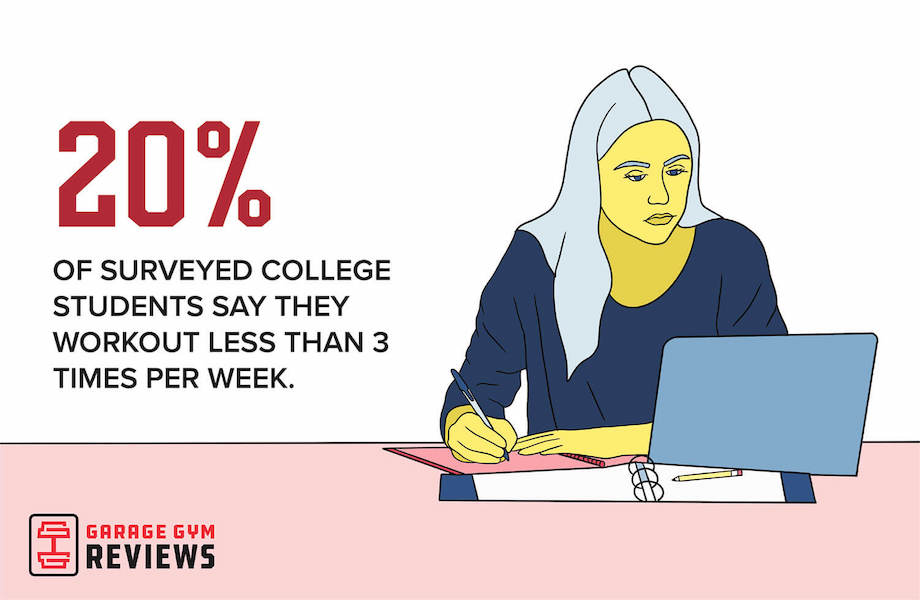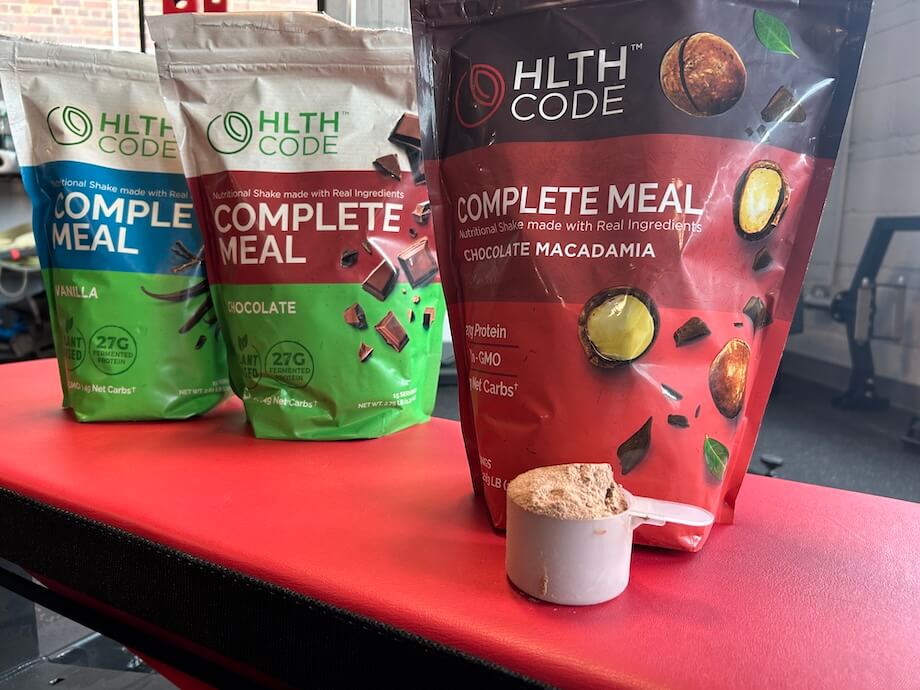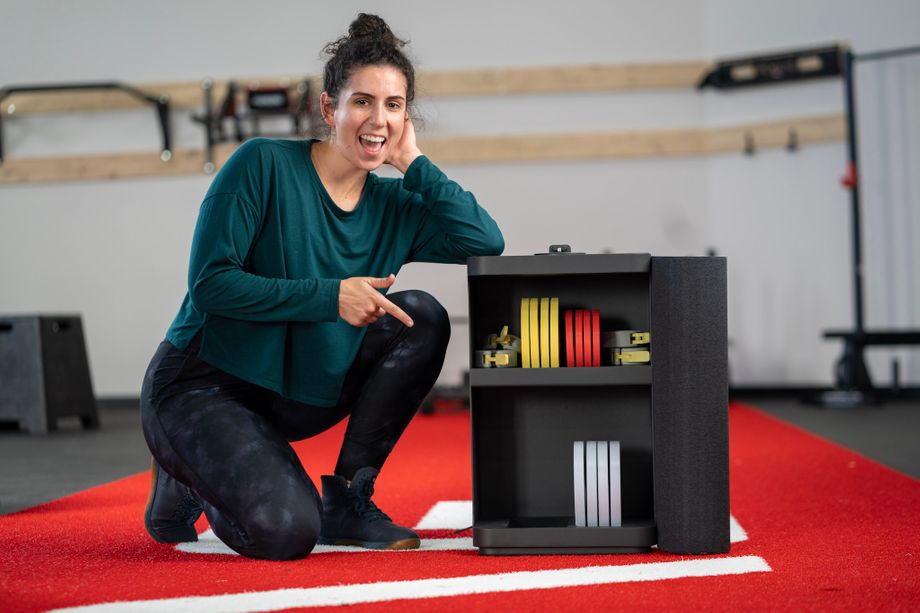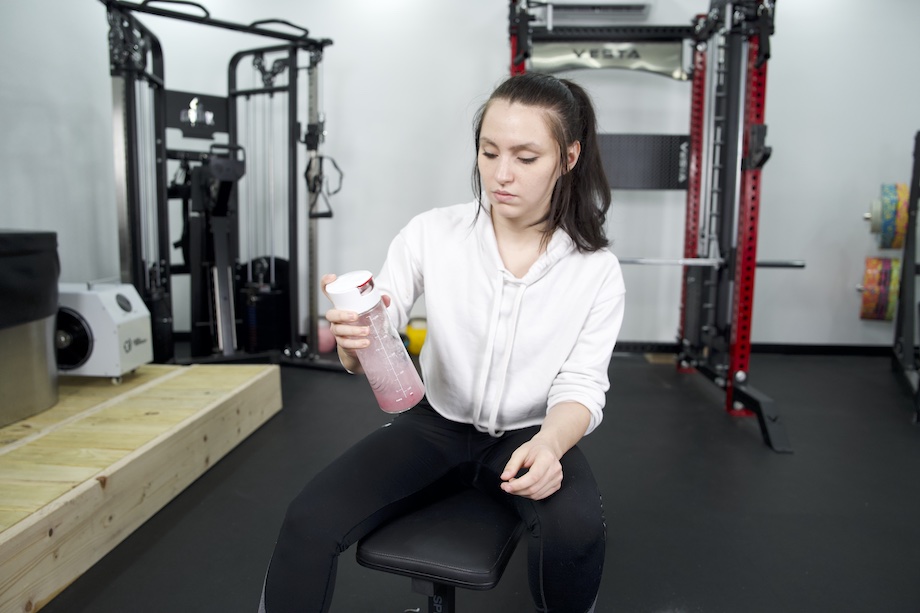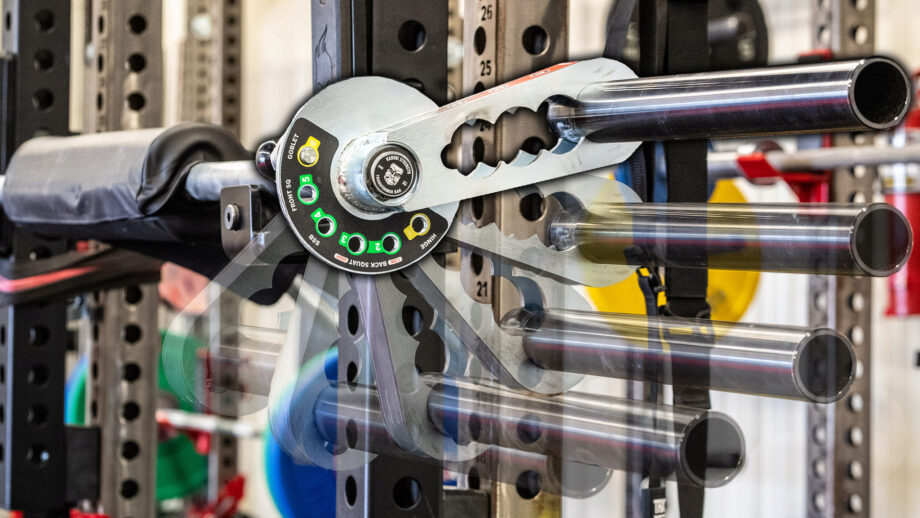73% of College Students Struggle to Maintain a Fitness Routine
During your first college year, your life and routine will likely shift significantly. With new routines, social engagements, classes, homework, and other responsibilities, your days will look and feel different than they did before.
A 2017 study in the International Journal of Exercise Science1 reports that sticking to regular exercise and healthy eating habits might become challenging to manage as course load and study time increase. And on top of packed schedules, research also suggests2 that high-calorie dorm foods and late-night snacking contribute further to the infamous “freshman 15.”
So how is a student to prioritize their studies and a healthy, active lifestyle?
We know it sounds tough—and it is! But, with a realistic plan and attainable strategies, you are much more likely to succeed. The following tips and ideas from various experts in fitness, nutrition, mental health, and wellness will help you form new habits that are manageable and help you stay fit in college.
Survey: What are the Challenges Students Face?
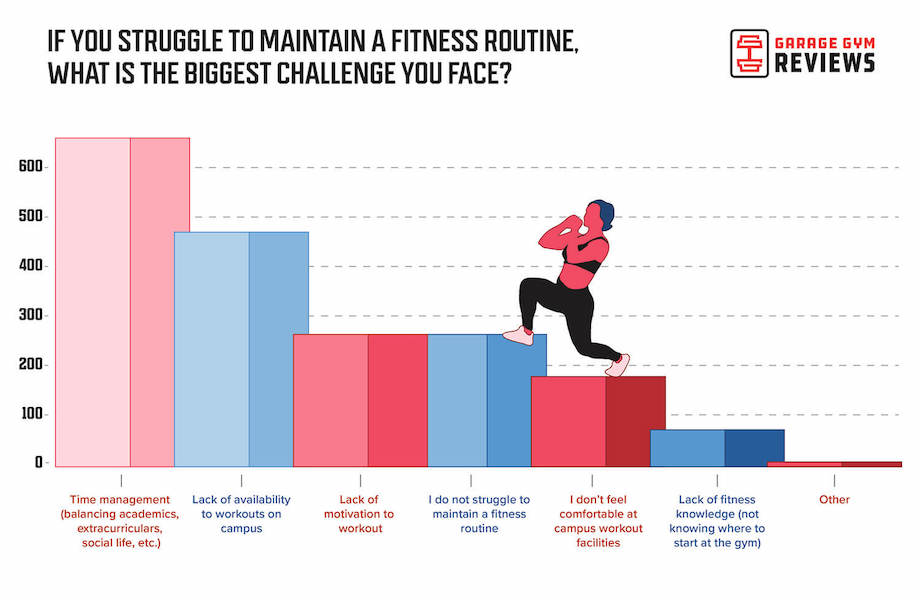
There’s no doubt staying healthy and active in college can be tricky. To find out the most common barriers to solid fitness and nutrition habits, we surveyed 1,000 college students to understand their challenges around creating and maintaining an active lifestyle.
Our key findings regarding obstacles these students face included:
- 73% of college students surveyed struggle to maintain a fitness routine.
- 70% of students reported time management as a significant barrier.
- 50% of the respondents also reported a lack of available resources.
- 19% said they feel uncomfortable in their college gyms.
- 28% of the respondents reported a lack of motivation as a significant factor in their lack of healthy lifestyle habits.
- 20% said they workout fewer than three times per week.
Regarding the most popular activities among college students:
- 70% of the students reported enjoying outdoor activities such as hiking, running, walking, and cycling as a standard part of their workouts.
- 67% of respondents said they incorporate strength training into their routines.
- 40% also performed separate cardio activities when they found time.
From these responses, it seems that choosing outdoor and dorm-room physical activities can help increase motivation and accessibility for those not keen on working out in their college gyms. At the same time, better planning and small lifestyle changes could support students who find time management a barrier to success.
7 Tips to Stay Fit in College
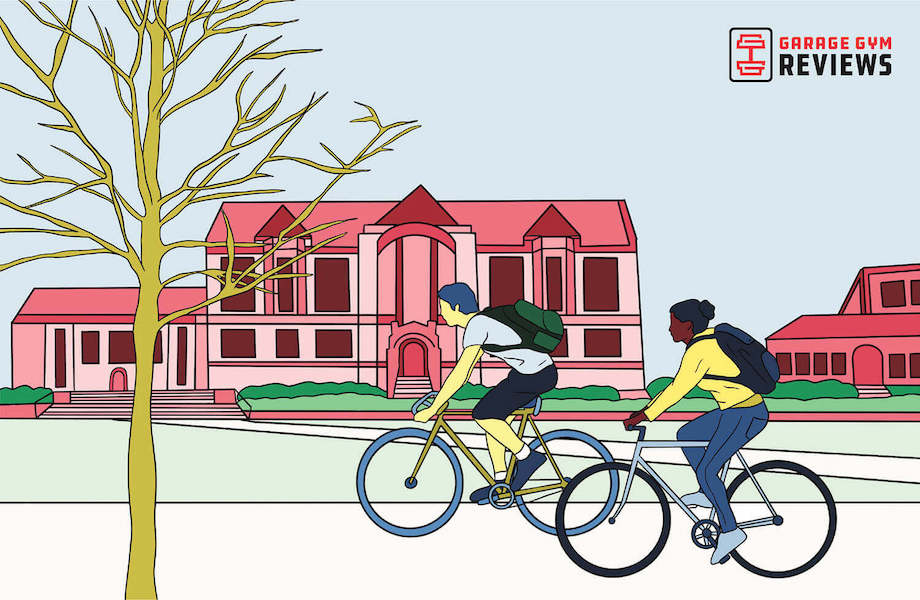
So, how do you overcome the common obstacles to sticking with a fitness routine? We have a few tips.
Tip 1: Master Time Management
Time management was the most significant factor expressed by the surveyed college students keeping them from a consistent workout schedule.
Research published in The International Journal of Exercise Science1 in November 2017 supports our survey findings. The study states that physical activity declines while sedentary behavior increases during college years, and the researchers tie this change to course load, studying time, and social media use.
To master your time management, research in the European Journal of Neuroscience3 confirms that building small, sustainable habits that become automatic will increase your chances of sticking to them long-term.
When planning your week, time-blocking your days is a great place to start. See what your “must-do” commitments are, such as classes, studying and coursework, your job, and any other imperative responsibilities you have. Next, see where you might have some time available to incorporate movement.
Add that time to your schedule by blocking it out and committing to being active during that set timeframe. Start slowly by adding some time every few days if you need to space it out, and see if you can increase the time or frequency of your activity as you get better at planning and prioritizing.
Tip 2: Fit In Small Bouts of Exercise
If you can’t block out time easily, consider adding exercise “snacks” throughout the day. Even short bursts of movement throughout the day add up and can help combat the effects of sitting, according to research published in July 2021 in The American Journal of Physiology-Endocrinology and Metabolism4.
A quick walk, stretching routine, a few push-ups, or a set of air squats in your dorm room will go a long way toward improving your posture, decreasing aches and pains, and increasing your overall energy expenditure (daily calorie burn).
Tip 3: Choose Activities You Enjoy
Ask any long-time fitness enthusiast how they’ve stuck to their routine for so long, and almost every single time, you’ll get an answer about how they actually like working out and being active.
Research published in June 2023 in the journal Clinical Rehabilitation5 reveals that even those who are highly motivated to exercise have a lower likelihood of sticking to their exercise commitments unless they genuinely enjoy their chosen activity. For this reason, finding a workout that doesn’t feel like a chore—but excites you to get up and get moving—is essential.
If you can’t find anything that excites you, try to broaden your idea of what a workout is. For example, you could attend dance lessons if you love to dance. Try a local hip-hop class or ballroom instruction for fun cardio.
Secondly, you could pair your activity with something you genuinely enjoy and only allow yourself to indulge in that activity while you work out. Examples include using a rowing machine while watching your favorite show or performing strength training while listening to the juiciest new true crime podcast.
This is called “temptation bundling” and has been shown through research published in November 2020 in the journal Organizational Behavior and Human Decision Processes6 to boost the likelihood of working out.
Tip 4: Find an Accountability Partner
Finding an accountability partner might help you stick to your goals. Letting someone know your goals and asking them to check in with you to hold you accountable can boost your motivation.
The praise or positive feedback you get from someone you admire also works to motivate you. Research published in July 2017 in the journal Patient Preference and Adherence7 shows that having an accountability partner who is encouraging and supportive can keep you focused on your goals.
Tip 5: Consider Group Exercise Options
Group exercise can help you stay on track, too. Exercising with others enables you to work physical activity and social time into one time block, so if you find your schedule tight, this might be the perfect solution.
For instance, look into intramural sports, take that hip hop class with your bestie, or look up partner workouts to do. Alternatively, go on a hike, bike, or walk with your friends as a way to catch up and spend some active time together. Your social life and physical health will both thank you!
Tip 6: Try Something New
Newer research suggests that novelty might be key to keeping fitness fun. An intriguing study published in the journal Frontiers in Psychology8 in 2020 found that “performing new and challenging exercises could increase enjoyment and interest while enhancing acquisition of new skills every time a new exercise is introduced.”
This makes sense when you consider how accomplished people feel when they learn something new! If this resonates with you, perhaps, then, something like ClassPass (with which you can try many new workouts without the commitment of a gym membership) is a good option.
Tip 7: Don’t Forget the Basics (Sleep, Hydrate, and Fuel)
Don’t underestimate the restorative power of a good night’s sleep. If you have trouble fitting in exercise, ensuring you go to bed at a reasonable time and get up early enough to work out will help you carve that time out of your day. You’ll soon notice that regularly getting enough sleep makes a huge difference in your ability to maintain energy levels that support your new exercise habits.
Nutrition is also a vital part of your routine. Not only does calorie balance help you stay healthy and fit, but nutrient intake also supports your activity and brain power while you work out, study, or take classes.
Getting plenty of carbs, protein, fats, vitamins, and minerals, as well as antioxidants and proper hydration (read: more water, less alcohol and partying, sorry!), will support your training goals and your educational pursuits.
Related: Best protein shakes
We know that students who are on dining hall meal plans may find it tough to stick to a healthy diet. But most food halls generally have a variety of healthy food, including veggies, whole grain options, healthy snacks, fresh fruit, and salad bars, that can help you eat a balanced diet.
Don’t forget: Eating healthy supports your immune system and brain function, too, and so will enable you to more smoothly navigate the challenges that come with college life (like marathon study sessions and avoiding whatever that semester’s campus “plague” is).
Related: Best greens powder
How to Create Workout Habits That Stick
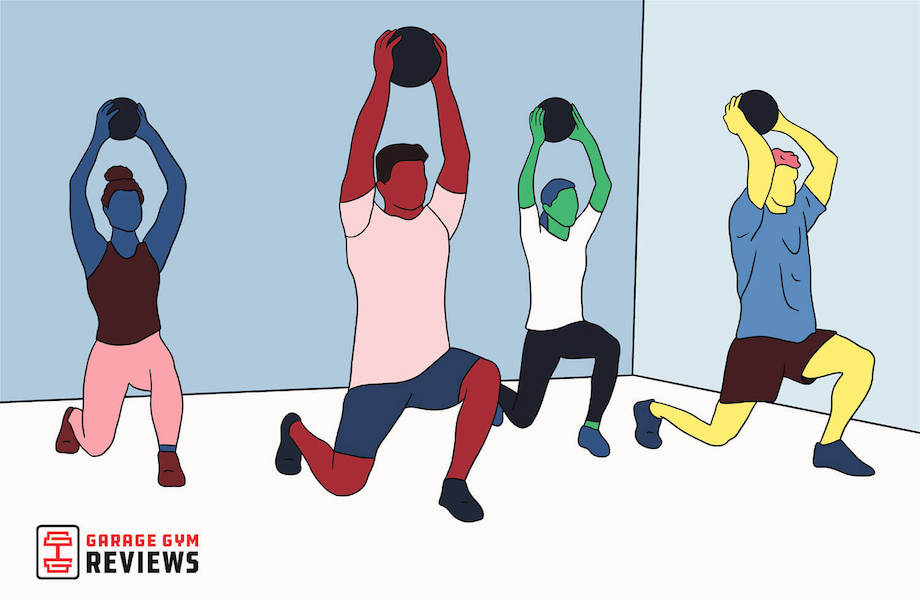
You can use tips and tricks from The Transtheoretical Model of Behavior Change9 to create lasting habits. When it comes to changing your behaviors and habits, there are six main stages:
- Precontemplation
- Contemplation
- Preparation
- Action
- Maintenance
- Termination
- Relapse
Here’s more information on each stage to help you make changes that last.
Precontemplation and Contemplation
In these two stages, you will be thinking about making changes. Precontemplation is when you consider the idea of forming new habits and changing current behaviors, but you are not ready to put them into action yet. It usually occurs around six months before you’re prepared to begin new habits.
With contemplation, you are closer to making changes, and you’ve all but decided to start. This may be when you consider the benefits and drawbacks of forming new habits and decide that the pros outweigh the cons. You are almost ready to start changing up your routine.
Preparation and Action
You may be in one of these two stages now, gathering advice for putting your habits into action. During the preparation phase, you have decided to start new habits and behaviors to help you achieve your goals.
You might be taking small steps to start changing your habits into new, beneficial ones. This is when you might be blocking your time, changing your sleep schedule, and looking for an accountability partner.
During the action phase, you’re now putting your new habits into play. For the last few months, you’ve been preparing for this phase, and while it’s still early, you’re likely highly motivated and learning new habits.
Maintenance
This phase is where the habits will stick. It’s the crucial phase where you deal with interruptions, unexpected setbacks, and other uncertainties in your daily life that may interfere with your new habits. The trick here is to ensure you don’t let these inevitable roadblocks sway you from sticking to your new behaviors.
To support this phase, develop some plan Bs for when you can’t stick to your routine. For instance, if you know you have a big project coming up and you won’t be able to get to the gym, plan to do a 10-minute bodyweight full-body workout in your room, or work in some short walks here and there just to keep active. Plan to return to your habits without worrying about what you skipped. Remember, these types of interruptions are typical and expected.
Termination and Relapse
Termination sounds like a bad thing, but in this case, it’s a huge win. Termination is when you have zero desire to go back to your previous habits that were not serving your healthy lifestyle goals. You are well-conditioned to perform your new routines consistently and know how to deal with interruptions.
Relapse is also a possibility here. Sometimes habits, even well-ingrained ones, can be broken, and you may revert to old behaviors again. Maybe you have a huge assignment or big exam, and the stress and busyness prevent you from sticking to your routine. It’s okay: just start where you left off and remember this happens to almost everyone.
How to Support Your New Habits
To support your new habits, you can use positive psychology. Research in Frontiers in Psychology shows10 that you will be much more likely to succeed if you believe in yourself and your capabilities.
Focusing on your strengths and successes will help you feel more confident and motivated to continue. Here are some ways to use positive psychology to help you stick to your habits:
- Keep a log of your workout progress to celebrate your wins
- Create small, attainable goals to work towards and check them off as you achieve them (examples include: increasing your deadlift PR by 5 pounds, doing three unbroken pull-ups, or walking for 30 minutes each day for a week straight)
- Share your progress with your accountability partner, family, or social network
- Start a gratitude journal that includes the benefits of how your new habits have changed your health and life
Campus Resources and Creative Ways to Stay Active
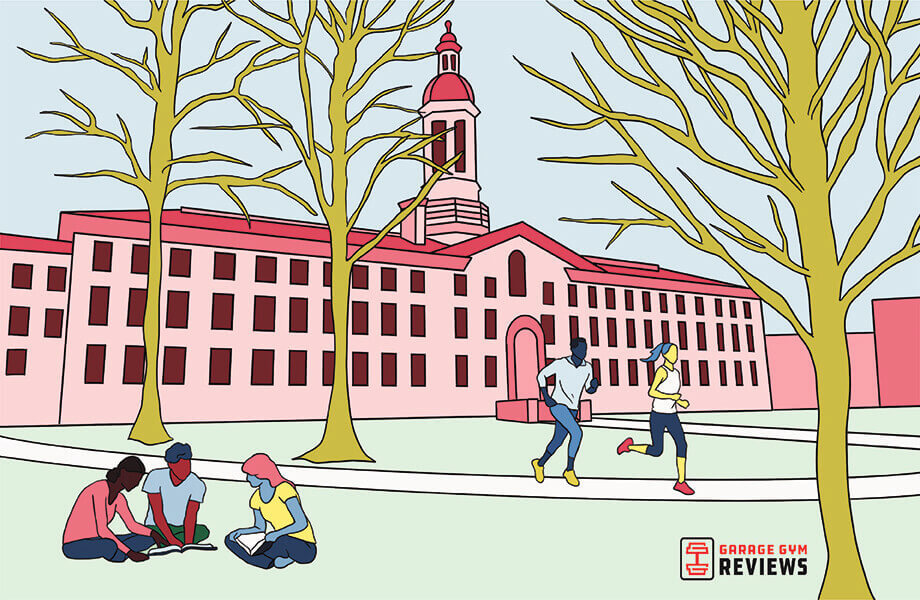
Of our survey respondents, 19% reported not feeling comfortable at their college gyms as the biggest challenge they face when maintaining an active routine.
These feelings could be due to busy, overcrowded gyms; intimidating machines or people; the gym being too far away; or perhaps just not knowing how to create a workout routine.
Below are some alternatives to help you keep active without the pressures of the gym.
Recreational Sports
Recreational sports are a social way to get a workout while meeting people or spending time with friends. Recreational sports are great for former high school athletes who are adjusting to college and aren’t playing on college teams, but they are also fun for anyone who enjoys a team-focused, fun, and engaging way to stay active.
Group Exercise On and Off Campus
Group exercise classes are available on and off college campuses, and there are often student discounts for off-campus options. Examples include spin class, martial arts, and group personal training. Cheap rates or free on-campus options are also likely available and are an excellent way to hang out with or meet new friends.
Campus Health and Wellness Resources
Dietitians, counseling services, and access to personal trainers are often available on campus as part of student health services. Health services can refer you to local professionals in the area who offer discounted rates for students.
Outdoor Activities
Outdoor activities are always accessible as an alternative for keeping active. Ideas include long walks, hiking, running, cycling, rollerblading, or exploring trails in the area. Colleges or communities also often have outdoor tracks you can use to jog or do sprints on. Hills are another option for sprints if you want a high-intensity workout.
Class Electives
Some colleges offer the choice of taking one-hour electives like disk golf, dance, weight lifting, or kickball. Taking these physical pursuits as a class adds another layer of accountability and can help you get started. You’ll learn new skills while earning credits toward your program and keeping active.
Dorm Room Workouts Between Classes
Dorm room workouts you can get done between classes or during study breaks are an excellent way to keep fit and stick to your strength training routine. Below is an example of a full-body workout you can do with or without dumbbells.
Dorm Room Workout
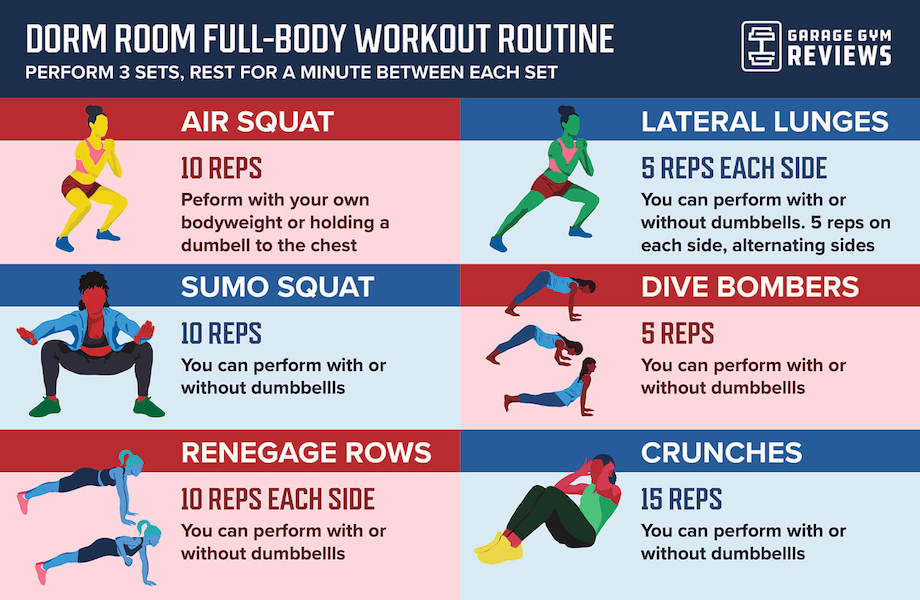
Use this as your primary full-body workout or as a plan B when you can’t get to the campus weight room. A set of adjustable dumbbells is an excellent choice since they take up little space but allow you to progress your weight load, which is vital for seeing results in the long term.
Perform three sets, resting for one minute between each set.
Air Squat (bodyweight or holding a dumbbell to the chest)
- Stand upright with your feet about hip-width apart. You may point your toes outward slightly if it’s comfortable.
- Hinge at the hips, sending your hips backwards, and begin to descend by bending the knees.
- Descend as low as possible while maintaining an upright torso.
- Continue lowering until you feel a contraction in your quads, usually accompanied by a burning sensation, which is normal.
- Pause for a second and slowly raise back to standing, keeping your upper body straight. Keep your heels on the ground the entire time.
- Repeat for 10 total reps.
Lateral Lunge (with or without dumbbells)
- Stand with your core engaged and feet shoulder-width apart. Bring your hands together in front of your chest as a counterbalance.
- Step your right foot to the right side, keeping your left foot in place. Bend your right knee, hinging your hips back until your right thigh is parallel with the floor or lower and your left leg is straight.
- Engage your hamstrings and right glute to push off the floor, standing in the starting position. Repeat on the left side.
- Alternate to complete five reps on each leg.
Sumo Squat (with or without dumbbell)
- Stand with your feet separated in a wider-than-usual squat stance, toes slightly pointed out. Hold a dumbbell at chest height in both hands, or two hanging down between your legs, or use bodyweight only.
- With your torso straight and chest up, hinge your hips back and bend your knees to lower into a squat.
- When you’ve lowered so that your thighs are parallel or below with the floor, pause and use your glutes and hamstrings to raise back up, pushing through your feet.
- Contract your glutes at the top and lock out your hips.
- Repeat for 10 total reps.
Dive Bombers (bodyweight)
- Get onto all fours on the floor and place your hands shoulder-width apart, palms flat on the floor.
- With your back straight, fully extend your legs behind you to get into a push-up position. From here, step your feet slightly wider than shoulder-width apart.
- With your elbows locked into straight arms, step your hands towards your feet until your body forms a V with your glutes in the air.
- Exhale and bend your elbows while arching your chest forward, moving your hips towards the floor. Perform a pushup here if desired.
- Arch your back and straighten your arms again, pulling your chest through your arms and lifting your head to look toward the ceiling.
- Inhale and push through your hands, returning to the starting position
- Repeat for five total reps.
Renegade Rows (with or without dumbbells)
- Place a dumbbell on either side of where your body will be on the floor, about shoulder-width apart. Alternatively, skip this step to use only body weight.
- Get into a push-up position between the dumbbells and grasp them. They should be stacked under your shoulders.
- Position your feet slightly wider than hip-width, your body forming a straight line.
- Push down through your left arm, slightly shifting your weight, and row the right dumbbell, leading with your elbow in an arch to bring the dumbbell to your side.
- Hold here for a breath to feel the contraction in your back.
- Lower your hand or weight back to the floor, and immediately repeat on the left side.
- Repeat for a total of 10 reps on each side.
Crunches (weighted or not)
- Lie on your back with your feet flat on the floor and knees bent 90 degrees or with your feet elevated on the bed, chair, or another sturdy surface.
- Hold a dumbbell firmly above your head, or place your hands behind your head or crossed at your chest if you prefer to use no weight.
- If using a dumbbell, lock out your elbows.
- Push your lower back into the floor and engage your core.
- Curl your shoulder blades off the floor while using your abdominal muscles. You should think about bringing your ribs to your pelvic bones rather than your chest to the sky.
- You will naturally raise the weight while fighting against resistance and gravity, raising only a few inches.
- Pause at the top before slowly curling back down to the floor.
- Repeat for 15 total reps.
Benefits of Maintaining an Active Lifestyle in College
In our survey, 27% of college students reported a lack of motivation as the main challenge they faced when prioritizing a healthy lifestyle. Here are some of the benefits of maintaining an active lifestyle in college that will help inspire you to keep going, according to experts.
Boosts Mental Health
Exercising is an effective way to help ease the symptoms of mental health conditions, according to Dr. Phillip Hemphill, Ph.D. and Chief Clinical Officer at APN. This is especially true for those suffering from anxiety or depression, he says, and aerobic exercise like swimming, hiking, dancing, or running can boost their well-being.
“Researchers believe that the decrease in symptoms is likely caused by an increase in [blood] circulation to the brain and changes in the hypothalamic-pituitary-adrenal (HPA) axis,” he explains, “which in tandem reduces stress and increases energy,” adds Hemphill.
Aside from these chemical changes, regular exercise helps you form a routine, ensures a period of distraction from negative self-thoughts, provides a sense of accomplishment and satisfaction, and is an opportunity for social interaction—all positives that can contribute to increased feelings of wellness, according to Hemphill.
Related: Best probiotic
Improves Academic Performance
“Exercise increases energy and stamina, decreases stress, heightens memory, and improves sleep, essentially ensuring college students have the right foundation to tackle academic tasks,” explains Hemphill, adding, “if students are mentally healthier, they are more likely to succeed.”
Hemphrill also says that increasing time spent playing a sport or going to the gym correlates with improving school performance.
“Academic excellence fundamentally relies on healthy and efficient executive function, and activity improves executive function at the base level,” he adds.
Helps Decrease Stress
Exercise has many positive effects on the body and mind, boosting students’ self-esteem, reducing stress, and improving mood. According to licensed mental health counselor Colleen Wenner, all three factors are integral in improving the overall quality of life.
“Reducing stress for a college student means handling the pressures of studying and balancing classes with extracurricular activities,” Wenner says.
“Exercise increases the production of neurotransmitters like serotonin, dopamine, norepinephrine, and epinephrine,” she explains. “These neurotransmitters play an essential role in mood regulation. Therefore, exercise should not be an afterthought but a daily habit.”
Final Thoughts
No matter where you are in your journey toward making behavioral changes that help you form healthy habits throughout your college years, the above tips and suggestions can keep you motivated and organized for working toward your goals.
Although sticking to new routines can be challenging, it’s clear that leading an active lifestyle will provide many benefits that also support your educational and social goals in college.
Remember that everyone comes upon challenges and stumbling blocks—that’s just part of life, especially as a busy college student. But with some planning and determination, you can incorporate healthy lifestyle habits that will boost your health, well-being, and educational goals.
References
- Calestine J, Bopp M, Bopp CM, Papalia Z. College Student Work Habits are Related to Physical Activity and Fitness. Int J Exerc Sci. 2017;10(7):1009-1017. Published 2017 Nov 1.
- Gropper SS, Simmons KP, Connell LJ, Ulrich PV. Changes in body weight, composition, and shape: a 4-year study of college students. Appl Physiol Nutr Metab. 2012;37(6):1118-1123.
- Baladron J, Hamker FH. Habit learning in hierarchical cortex–basal ganglia loops. Eur J Neurosci. 2020;52(12):4613-4638.
- Smith JAB, Savikj M, Sethi P, et al. Three weeks of interrupting sitting lowers fasting glucose and glycemic variability, but not glucose tolerance, in free-living women and men with obesity. Am J Physiol Endocrinol Metab. 2021;321(2):E203-E216. doi:10.1152/ajpendo.00599.2020
- Klompstra L, Deka P, Almenar L, et al. Physical activity enjoyment, exercise motivation, and physical activity in patients with heart failure: A mediation analysis. Clin Rehabil. 2023;36(10):1324-1331. doi:10.1177/02692155221103696
- Kirgios EL, Mandel GH, Park Y, et al. Teaching temptation bundling to boost exercise: A field experiment. Organizational Behavior and Human Decision Processes. 2020;161:20-35.
- Oussedik E, Foy CG, Masicampo EJ, Kammrath LK, Anderson RE, Feldman SR. Accountability: a missing construct in models of adherence behavior and in clinical practice. Patient Prefer Adherence. 2017;11:1285-1294. Published 2017 Jul 25. doi:10.2147/PPA.S135895
- Lakicevic N, Gentile A, Mehrabi S, et al. Make Fitness Fun: Could Novelty Be the Key Determinant for Physical Activity Adherence?. Front Psychol. 2020;11:577522. Published 2020 Oct 15. doi:10.3389/fpsyg.2020.577522
- Boston University School of Public Health. The Transtheoretical Model (stages of change).
- Ciarrochi J, Atkins PW, Hayes LL, Sahdra BK, Parker P. Contextual positive psychology: Policy recommendations for implementing positive psychology into schools. Front Psychol. 2016;7:1561. doi:10.3389/fpsyg.2016.01561


